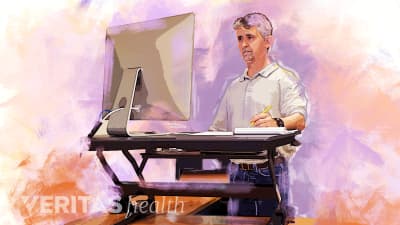Sitting in an office chair all day may be hurting your back. Try some of these unconventional solutions to see if they help provide relief.
A cervical selective nerve root block can help your doctor locate which of your nerves is irritated, and may also reduce pain in your neck, shoulders, arms, and hands.
There are a number of simple things you can try to help keep your spine as healthy as possible. These 5 tips will help you to minimize complications from your back condition and/or prevent future painful episodes.
There are many options for alternative therapies to treat back and neck pain, including massage, acupuncture, yoga, and more. A large review reveals which options are the most effective at relieving pain.
Learn how to get the recommended daily amount of calcium on a non-dairy, lactose intolerant diet.
How to tell if your sciatica is actually piriformis syndrome? Both piriformis syndrome and sciatica can cause back pain that travels down your leg. But their causes, typical symptoms, and treatment options differ widely.
Traveling with sciatica can cause your symptoms to aggravate or flare, making your overall experience less exciting. Here are 3 helpful tips to control or minimize your sciatica pain during your next long trip.
Cervical stenosis with myelopathy can have painful, far-reaching effects on your body and health. Learn how cervical stenosis develops and how to spot the signs and symptoms.
Exercise is often advised for treating sciatica in the short term and to prevent recurrences. But some doctors may also recommend epidural steroid injections.
Learn about which conditions may benefit from weight training and guidelines and tips on how you can safely participate in strength training to help your back.










